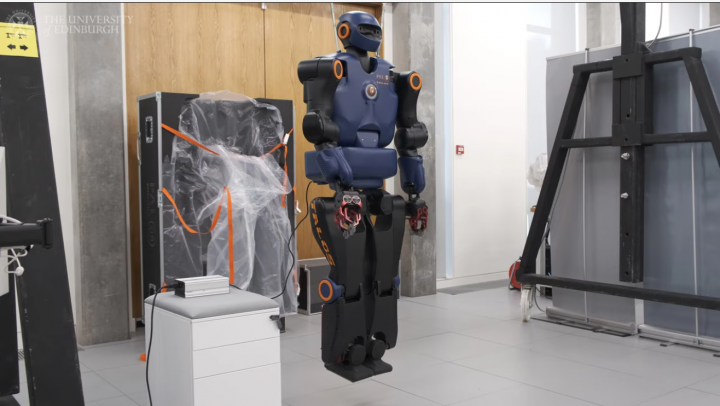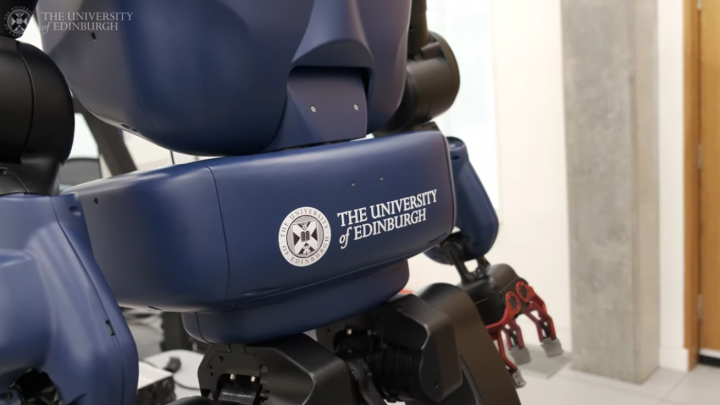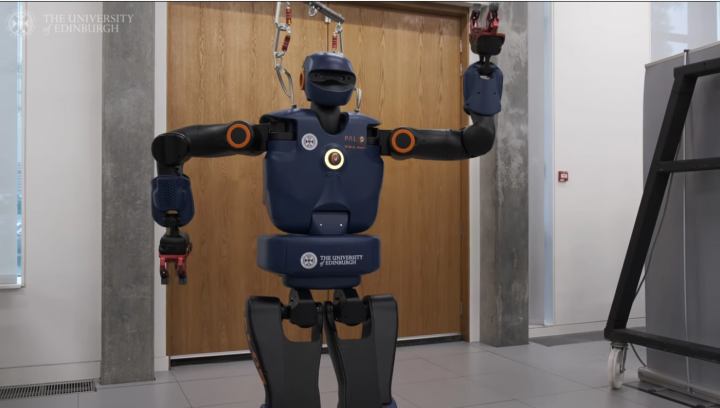TALOS – The Humanoid Robot
A new humanoid robot, TALOS, is the latest robotics lab occupant in the University of Edinburgh's Bayes Centre.
TALOS the humanoid robot has arrived at the Univeristy of Edinburgh’s Bayes Centre. TALOS can be found in the Centre for Robotics Research lab where the team will be using TALOS to conduct research on multi-contact loco-manipulation. The lab is equipped with multiple complementary platforms, 2-axis large area hoist, and additionally some mock up navigation circuits with slopes and steps on which the team intends to push the capabilities of TALOS and co-develop further improvements in collaboration with PAL.
The team are particularly excited about the addition of Talos as the 1.75m tall humanoid has inverse dynamics controllers, torque based motion command capabilities and an extremely generous range of motion compared to other humanoid platforms.
Sethu Vijayakumar, director of CDT in Robotics and Autonomous Systems answered some questions below regarding TALOS.
1. Which challenges have the team faced that TALOS will help to solve?
Humanoid robots are extremely challenging systems due to the bipedal nature, requiring real-time, extremely reactive planning and control but the integration into a compact form factor with onboard computer and power makes it even more challenging. Our team will be using Talos to conduct research on multi-contact loco-manipulation in such challenging humanoid platforms. Talos will help us validate some of the recent algorithmic advances in hierarchical long horizon motion planning, novel MPC techniques for hybrid problems such as foot step selection, contact optimisation and multi-objective trajectory optimisation as well as some sensory integration strategies for state estimation and localisation. We are keen on developing Shared or Punctuated Autonomy paradigms on the platform, where a user can provide high level, immersive target goals/feedback to the robot without direct line of sight and the robot can achieve significant robust autonomy in achieving a desired task.
2. Which feature of TALOS will be most useful to the needs of the team?
We are particularly excited about the inverse dynamics controllers, torque based motion command capabilities and an extremely generous range of motion compared to other humanoid platforms. We have upgraded the IMU sensors on the torso of the robot -- this will hopefully enable us to improve state estimation and drift compensation during long horizon loco-manipulation but also enable us to tackle more dynamic movements. Our field robotics living lab is equipped with many complementary platforms, 2-axis large area hoist as well as some mock up navigation circuits including slopes and steps on which we intend to push (pun intended!) the capabilities of Talos and co-develop further improvements in collaboration with PAL.
3. Which other platforms do the team use aside from TALOS and how can TALOS impact on your research agenda, compared with the other platforms?
Our group has a wide range of fixed base, wheeled and legged platforms including the NASA Valkyrie humanoid. A more comprehensive list can be found on our webpage.




